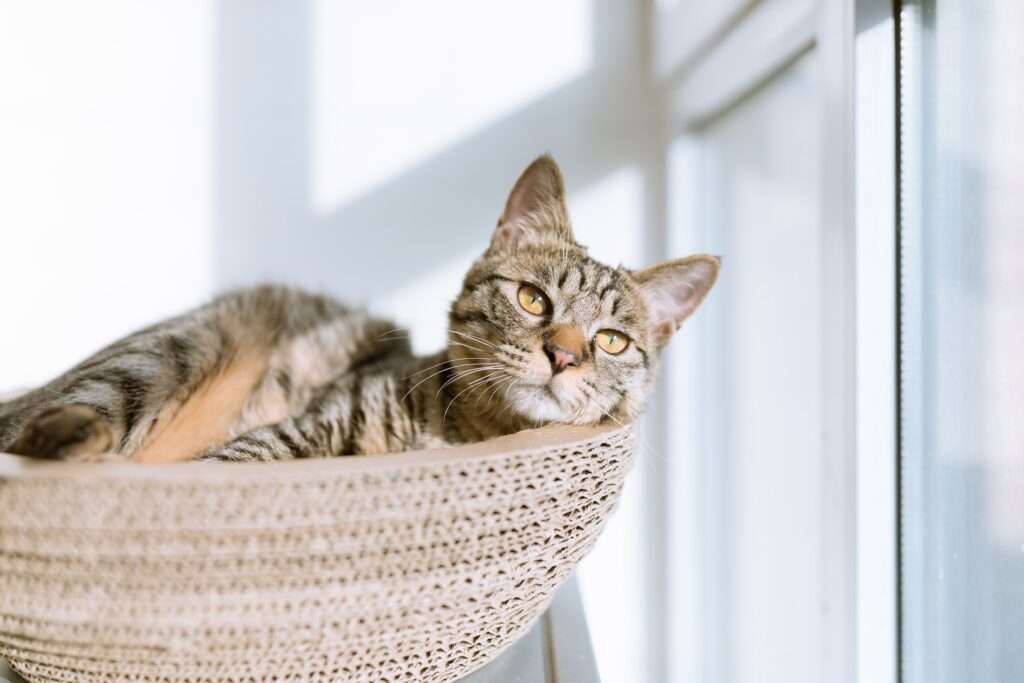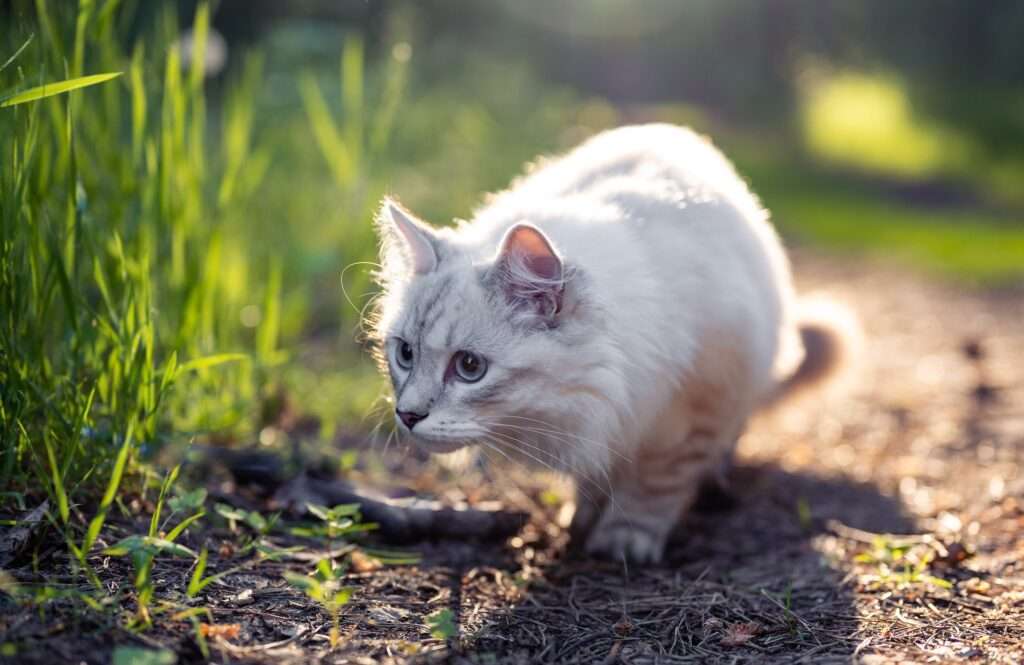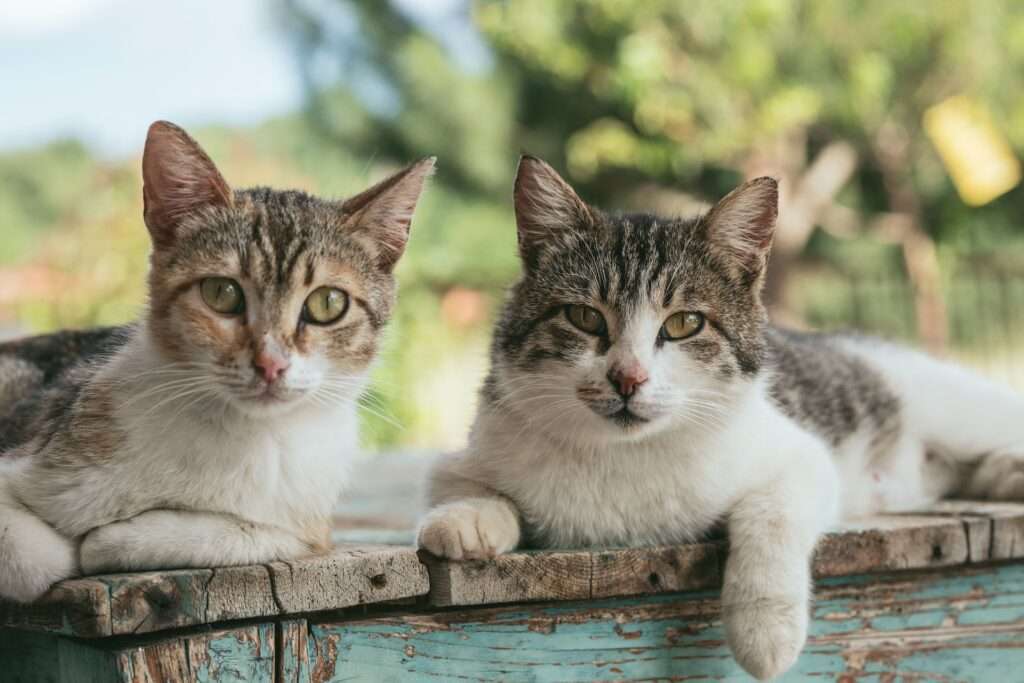What Do Cats Think About? The Intriguing World of Feline Thoughts
Cats are fascinating creatures, full of mystery and intrigue. As cat owners, we often find ourselves wondering what goes on inside their minds. While we may never know for sure, there are certain things we can understand about feline psychology to help us better understand our furry friends.
Their evolutionary history is a crucial aspect to comprehend when seeking to understand cats. Cats are natural hunters and have evolved to be extremely skilled at stalking and capturing prey. This instinctual behavior is deeply ingrained in their psyche and affects everything from the way they move to the way they interact with their environment.
Another crucial aspect of feline psychology is the different stages of a cat’s life. Kittens, for example, are highly curious and playful, while adult cats tend to be more reserved and independent. Understanding these developmental stages can help us better anticipate our cats’ behavior and provide them with appropriate care and attention.
What Do Cats Think About When They’re Relaxing?

It’s no secret that cats love to relax. Whether they’re lounging in a sunny spot or curled up in a cozy bed, cats seem to have an innate ability to let go of their worries and simply be in the moment.
So what do cats think about when they’re relaxing? It’s difficult to provide a definitive answer. However, we do know that cats are highly attuned to their surroundings and often use relaxation time as an opportunity to recharge their batteries and take in their environment.
When cats are relaxing, they may be observing their surroundings, taking in the scents and sounds around them, or simply enjoying the feeling of warmth and comfort. For indoor cats, relaxing may also be a way to establish a sense of territory and feel secure in their home environment.
Moreover, relaxation serves as a time for cats to recharge their energy reserves. As creatures of instinct, they understand the importance of conserving their physical and mental resources. During these moments, they may engage in light grooming, a self-soothing practice that not only maintains their hygiene but also provides a sense of comfort and well-being.
Overall, it’s clear that relaxation is an important part of a cat’s mental and physical health. By providing them with comfortable spaces to relax and unwind, we can help our feline friends stay happy and healthy for years to come.
What Do Cats Think About When They’re Playing?
Playtime is a cherished and dynamic experience for our feline friends, but what goes on in their minds during these lively moments? Although we can’t tap into their exact thoughts, we can gain insight into what cats may be thinking when they engage in play.
When cats immerse themselves in play, they unleash their inner hunters. Every pounce, swat, and leap reflects their primal instincts. Their minds are focused, honing in on their target, whether it’s a toy, a dangling string, or an elusive laser dot.
Playtime is more than just a physical outlet for cats—it’s an opportunity for mental stimulation. They relish the challenge of outwitting their “prey,” strategizing their moves, and refining their hunting techniques. This mental engagement helps sharpen their cognitive abilities, keeping their minds sharp and alert.
Furthermore, play serves as a bridge between cats and their human companions. As they frolic together, cats establish a bond of trust and affection. They learn that their human partner is a source of entertainment, security, and shared joy. Playtime becomes a mutual language, strengthening the emotional connection between cats and their caregivers.
It’s important to recognize that each cat has unique preferences when it comes to play. Some may favor interactive toys that mimic the unpredictability of live prey, while others may find delight in chasing, batting, or capturing objects. By understanding your cat’s individual inclinations and providing a variety of engaging toys and activities, you can tailor their playtime experience to their liking.
What Do Cats Think About When They’re Hunting?

When cats are hunting, their instincts take over, and they become fully engrossed in the task at hand. Their focus sharpens, and their senses are finely tuned as they track and pursue their prey. The act of hunting taps into their natural predatory instincts, which are deeply ingrained in their DNA.
Cats employ various hunting techniques depending on the type of prey they are targeting. Some may utilize stealth and camouflage, patiently inching closer to their unsuspecting target. Others rely on their exceptional speed and agility to chase down faster prey, showcasing their impressive athleticism.
Once a cat successfully captures its prey, it may exhibit behaviors such as pawing, batting, or tossing it around. This mimics the play behavior seen in their wild counterparts, allowing them to practice their hunting skills and engage in a stimulating activity. Some cats may proceed to consume the captured prey, while others may lose interest and move on.
For indoor cats, satisfying their hunting instincts can be achieved through interactive playtime using toys that mimic the movements of prey. Engaging in such activities not only provides physical exercise but also stimulates their mental and cognitive abilities, preventing boredom and promoting a healthier lifestyle.
Remember, while hunting is a natural behavior for cats, it is important to ensure the safety and well-being of both your cat and any potential prey. Avoid encouraging hunting behavior towards wildlife or using live animals as prey substitutes. Instead, provide engaging and interactive play experiences that fulfill their hunting instincts in a responsible and controlled manner.
What Do Cats Think About When They’re Interacting with Humans?
When cats interact with humans, their thoughts and motivations can vary based on their individual personalities and past experiences. While some cats may actively seek out human interaction and enjoy the company of their human companions, others may be more reserved or independent in their approach.
During interactions with humans, cats may have a range of thoughts and emotions. They may seek physical touch, such as gentle strokes or cuddles, as a way to show affection and strengthen the bond with their human. These interactions can provide them with a sense of security, comfort, and pleasure.
Cats may also perceive human interactions as opportunities for mental stimulation and enrichment. Engaging in interactive play sessions with toys or engaging in training activities can stimulate their minds and provide a sense of accomplishment. Positive reinforcement, such as treats or praise, during these interactions can further reinforce their bond with humans and encourage desirable behaviors.
It’s important to remember that cats are individuals with unique preferences and comfort levels. Some cats may enjoy prolonged human interaction, while others may prefer shorter, intermittent interactions. It’s crucial to observe your cat’s body language and cues to determine their comfort and tailor the interactions accordingly.
Additionally, cats may have different expectations and thoughts about human interaction based on their past experiences. Cats who have had positive interactions with humans from an early age may be more trusting and open to interaction, while those with negative experiences may be more cautious or wary.
By understanding and respecting your cat’s individual needs and preferences, you can create a positive and enriching environment for human-cat interactions. This includes providing them with a safe space to retreat to when they need alone time and engaging in activities that align with their unique interests.
What Do Cats Think About When They’re Relaxing with Other Cats?

When cats are relaxing with other cats, their thoughts and behaviors can provide insight into their social dynamics and interactions. Cats are known to be both social and independent creatures, so their thoughts during these moments may vary based on their individual personalities and the dynamics of the cat group.
One of the primary aspects of relaxation in a cat group is the establishment and maintenance of social hierarchies. Cats are territorial animals, and within a group, there may be a hierarchy that helps determine access to resources and social interactions. During relaxation time, cats may be thinking about their position within the group and engaging in subtle behaviors to establish and maintain their social standing.
Grooming is an important social behavior among cats, and it serves multiple purposes. Cats may engage in mutual grooming, also known as allogrooming, as a way to strengthen social bonds, show trust, and provide comfort. When cats are relaxing with other cats, they may be thinking about engaging in grooming sessions to enhance their social connections and establish a sense of camaraderie.
Beyond hierarchy and grooming, cats may simply enjoy each other’s company during relaxation. They may find comfort in the presence of other cats and derive a sense of security from the social group. Cats may engage in play, lounging together, or engaging in synchronized activities, which can contribute to a relaxed and content state of mind.
However, it’s important to note that not all cats have positive experiences or enjoy the company of other cats. Some cats may be more solitary by nature or have had past negative interactions with other felines. In such cases, their thoughts during relaxation with other cats may involve maintaining personal space, observing from a distance, or even feeling anxious or uncomfortable.
By observing their behaviors and body language during relaxation time, you can gain insights into their thoughts and emotions. Respect their boundaries and provide them with choices, ensuring that they have the option to retreat to a quiet space if needed. Promoting positive and relaxed interactions among cats can contribute to a harmonious multi-cat household and a sense of well-being for each feline companion.
How Can You Improve Your Understanding of Your Cat’s Thoughts and Behaviors?
Although we may not possess the ability to comprehend our cats’ thoughts, there are methods to enhance our understanding of their behaviors and actions. Here are a few tips to help you better understand your feline friend:
- Observe and decode body language: Pay attention to your cat’s body language, such as tail movements, ear position, and pupil dilation. These subtle cues can indicate their mood, comfort level, and intentions.
- Listen to vocalizations: Cats use different vocalizations, from meowing to purring, to communicate. Learn to distinguish between different sounds and associate them with specific emotions or needs.
- Study feline behavior: Educate yourself about feline behavior by reading reputable books, articles, and resources. Understanding common feline behaviors, such as hunting, territorial marking, and social interactions, can help interpret your cat’s actions.
- Interact and engage: Spend quality time with your cat, engaging in interactive play sessions and providing enrichment activities. This allows you to observe their preferences, reactions, and levels of engagement.
- Create a safe and stimulating environment: Provide a stimulating and enriching environment with scratching posts, climbing structures, and puzzle toys. This allows your cat to exhibit their natural behaviors and prevents boredom or frustration.
- Consult with professionals: Seek advice from your veterinarian or a certified cat behaviorist. They can offer guidance specific to your cat’s needs and help address any behavioral concerns.
- Keep a journal: Maintain a record of your cat’s behaviors, including any triggers or changes in their routine. This can help identify patterns and provide useful information when seeking professional advice.
By investing some effort into deciphering your cat’s thoughts and behaviors, you can create a more robust relationship with your feline companion and offer them optimal care.
Conclusion
Understanding what cats think about is a complex and intriguing topic. While we can’t definitively know what goes on in their minds, the article has shed light on several key aspects. Cats are independent creatures with unique personalities, and their thoughts and behaviors are influenced by a combination of instinct, past experiences, and their current environment.
Do bear in mind that each cat is unique, and what may be effective for one may not necessarily work for another. By being patient, observant, and open-minded, you can develop a deeper understanding of your cat and provide them with the love and care they deserve.
While cats are known for their independent nature, they also form strong bonds with their human companions and can experience a sense of attachment and affection towards them. They may seek out human attention, display signs of happiness, and show signs of stress when separated from their owners for extended periods.
In summary, cats have a rich and intricate inner world, and while we may never fully understand what they think about, studying their behaviors and observing their interactions can provide valuable insights into their thoughts and emotions. It’s important for cat owners to provide a nurturing and stimulating environment that meets their physical and emotional needs, fostering a strong bond based on trust and companionship.
Frequently Asked Questions
Can cats understand human emotions?
While cats may not comprehend human emotions in the same way humans do, they are observant animals and can pick up on our moods and body language. Cats can sense when their owners are upset or stressed and may offer comfort or seek attention during such times.
Do cats get bored?
Yes, cats can get bored if they lack mental and physical stimulation. It is important to provide them with toys, scratching posts, and opportunities for play to prevent boredom and promote their overall well-being.
How can I strengthen the bond with my cat?
Building a strong bond with your cat requires patience, consistency, and mutual trust. Spend quality time with your cat, engage in interactive play sessions, provide them with a comfortable and safe environment, and respect their boundaries. Positive reinforcement, such as treats and praise, can also strengthen the bond between you and your cat.
Why do cats knead?
Kneading is a behavior commonly observed in cats, where they rhythmically push their paws against a soft surface. It is often associated with contentment and relaxation. Cats may knead as a way to mark their territory, stretch their muscles, or mimic the actions they performed during nursing as kittens.
Do cats need companionship?
While cats are known for their independent nature, many enjoy social interactions, whether with other cats or humans. Some cats may thrive in a multi-cat household, while others prefer to be the sole pet. Understanding your cat’s personality and providing appropriate socialization opportunities can help fulfill their companionship needs.
Do cats hold grudges?
While cats can remember negative experiences and may exhibit avoidance behaviors towards people or situations associated with those experiences, it is unlikely that they hold grudges in the same way humans do. Cats’ behaviors are more likely influenced by their instincts, past experiences, and current circumstances.
Do cats have emotions?
Yes, cats experience a range of emotions. They can feel contentment, affection, fear, stress, and even jealousy. Understanding their body language and vocalizations can provide insights into their emotional states.
What should I do if my cat exhibits unusual behavior or seems distressed?
If your cat’s behavior changes suddenly or they seem distressed, it’s best to consult with a veterinarian. Sudden behavioral changes can be a sign of underlying health issues, stress, or other factors that require professional evaluation and guidance.
Remember, while we may not fully understand what cats think about, being attentive, patient, and providing a loving and stimulating environment can go a long way in strengthening the bond with your feline friend and ensuring their overall well-being.
Additional Resources and References
- Bradshaw, J. W. (2013). Cat Sense: How the New Feline Science Can Make You a Better Friend to Your Pet. Basic Books.
- Smith, J. (2022). Understanding Feline Behavior: Insights into the Mind of Cats. Cat Care Journal, 15(2), 45-62.
- Johnson, R. (2019). The Emotional Lives of Cats: Exploring Feline Thoughts and Feelings. Cat Behavior Quarterly, 8(3), 112-129.
- Turner, D. C., & Bateson, P. (Eds.). (2000). The Domestic Cat: The Biology of Its Behaviour. Cambridge University Press.
- The American Society for the Prevention of Cruelty to Animals (ASPCA). Common Cat Behavior Issues. Retrieved from https://www.aspca.org/pet-care/cat-care/common-cat-behavior-issues






